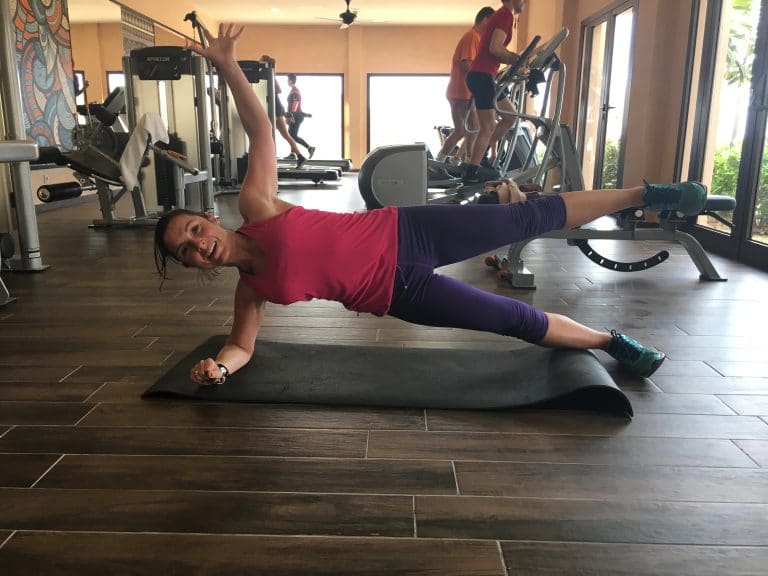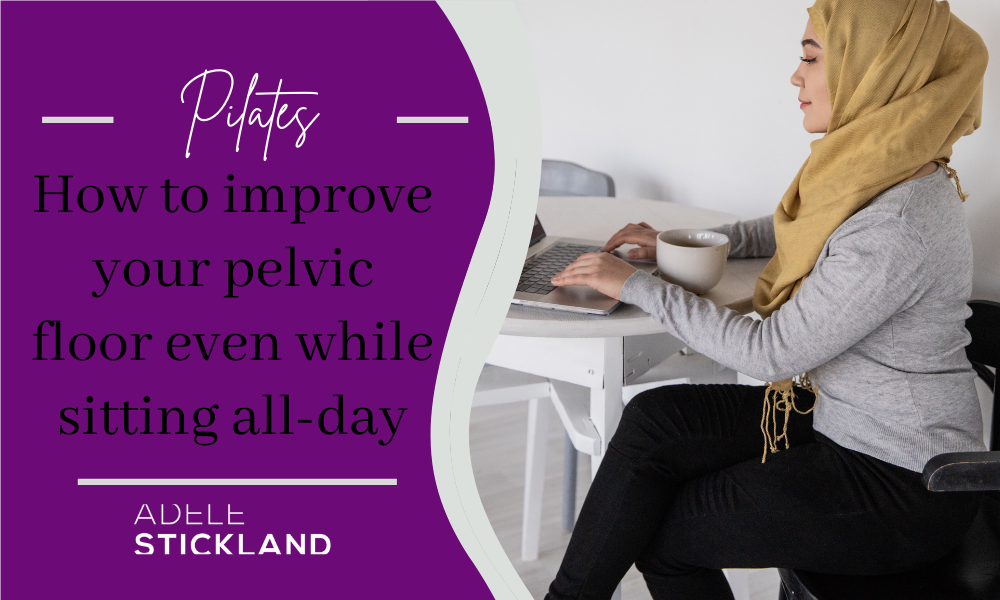
Prolapse – what you need to know.
My passion is Pilates, I love it. But there are some moves you need to be careful of if you have a ‘prolapse’. I was

Your pelvic floor muscles involve several interconnected muscles that support the internal organs of your pelvis. Together they are like a trampoline or hammock that stretches from your tailbone to our pubic bone. These muscles can lose tone when they are not used properly or regularly which is the case with most of us who sit too much and never add squats to your exercise routine. These muscles stop working together as they should which creates an imbalance. If your pelvic floor muscles lose too much tone, you may even experience a prolapse.
A prolapse is when the pelvic organs fall through the pelvic diaphragm. They are usually treated surgically, but it is better to rehabilitate your pelvic floor using simple Pilates techniques.
Weak pelvic floor muscles can result in stress incontinence which is urine leaking when you sneeze, laugh or simply move. Another sign of weak pelvic muscles is the urge that you have to urinate right now or you will have an accident. Both of these forms of incontinence will get worse over time if the root cause is not addressed.
Do you hear yourself saying:
“I have a small bladder”
or
“ever since I had babies I have to ‘go’ all the time”
Neither phrase is an accurate description of what is actually happening – they are very treatable conditions which simply need a few strengthening exercises and good posture to correct.
The simple answer is lack of movement. Your body was designed for continual movement and for squatting. For hundreds of thousands of years, your ancestors spent much of their time squatting as they prepared meals, cooked, gathered roots from the earth, socialised and went to the toilet. Now you mostly stand, sit or lye down which causes your pelvic floor to lose its strength and tone.
This situation can worsen after childbirth or abdominal surgery like c-section or hysterectomy. However, it is not just in your menopausal years that you are at risk of weak pelvic floor muscles. even teenagers and women who have never given birth can experience poor muscle tone. Whatever your age, you can train your muscles and bladder to free the urge to urinate and once at night – if that.
You need to be well hydrated to be healthy, so even if you do experience the need to ‘go’ to the toilet it all the time, don’t make the mistake of not drinking enough water in the hope that this will solve your problem. It will make your health worse.
Don’t miss my water challenge – 3 easy gorgeous healthy challenges
Your bladder will hold about two cups of liquid so if you are drinking 8 glasses of water a day you shouldn’t feel the need to pee every two hours. Your bladder feels the urge simply because it has become confused by the signals from the brain. If the pelvic floor muscles are weak, they will send the ‘I need to wee’ signal to the brain when it is not needed.
The most famous pelvic floor exercise is called the ‘Kegel muscle exercises’. These pelvic floor exercises were invented by a gynaecologist named Arnold Kegel in the 1940s. These exercises were you contract and hold your pelvic floor are great but they are incomplete. You need a range of muscle exercises to keep the entire pelvic bowel strong. The Kegel method as I explain below focuses on one muscle – which is a great start. However, this allows the other muscles in the pelvic group to remain weak. For overall pelvic floor strength, you need to understand where your pelvic floor muscle is, how to to use it and work other muscles around the pelvic floor area.
Click the video below that I did for the Menopause group and I will explain the Kegel pelvic floor exercises:
Strengthen your bottom muscles will support the toning of your pelvic floor muscles. Learn how to squat properly. As a Pilates instructor with 20 years experience, I believe incorrect squatting is the most common exercise fault I see. Watch and subscribe to my YouTube channel to find out how to squat properly and protect your knees and your back.
Lean forward when you use the loo and put your feet up on a stool to raise your knees. This position enables you to empty your bowels efficiently and it allows you to naturally tone your pelvic floor muscles. I explain more about this in another blog about flushing vitamins down the loo! You can tell if you are absorbing your supplements well by examining your toilet contents. Not a very pleasant subject but an important one.
DON’T MISS my blog on “Are you flushing your vitamins straight down the loo!”
One last tip, work on reducing the number of times you visit the loo during the day and even the night if you can. One trip per night should be enough.
Let me know how you get on.
I love Pilates and my job is to make it fun, exciting and exhilarating. Oh okay maybe not all of the above, but I will have a go at trying to help you fall in love with Pilates.
Practising your Pilates techniques with a full Pilates class online in the comfort of your own home, at your convenience. Each exercise is broken down into three levels, there is always a level for you. Plus there is so much more like meditations and low impact cardio workouts. Find out more click here
PS. SUBSCRIBE to my YouTube channel click here
[random_testimonial theme=”default_style” count=”1″ show_title=”0″ use_excerpt=”0″ show_thumbs=”1″ show_date=”1″ show_other=”1″ hide_view_more=”0″ output_schema_markup=”1″ show_rating=”stars”]

My passion is Pilates, I love it. But there are some moves you need to be careful of if you have a ‘prolapse’. I was

Do you want to improve your running technique to run faster? Would you love to enjoy running for as long as possible and run without

Why, if I teach Pilates, would I be interested in Exeter gyms? The answer is fairly simple. Whilst Pilates caters for a big part of your health; it doesn’t make you sweat!